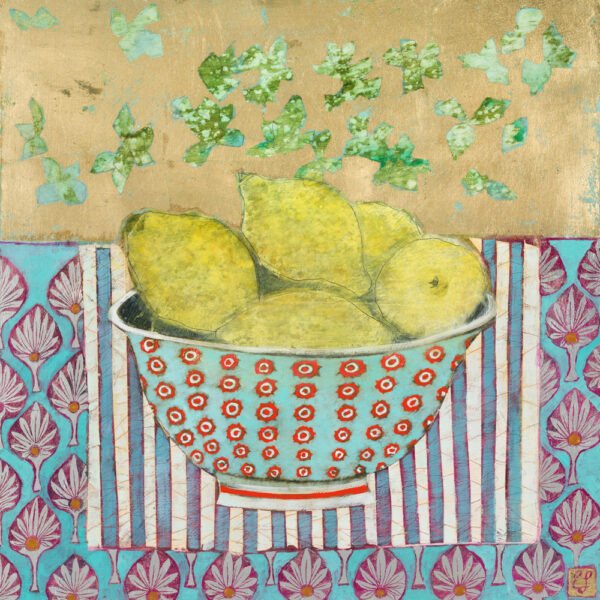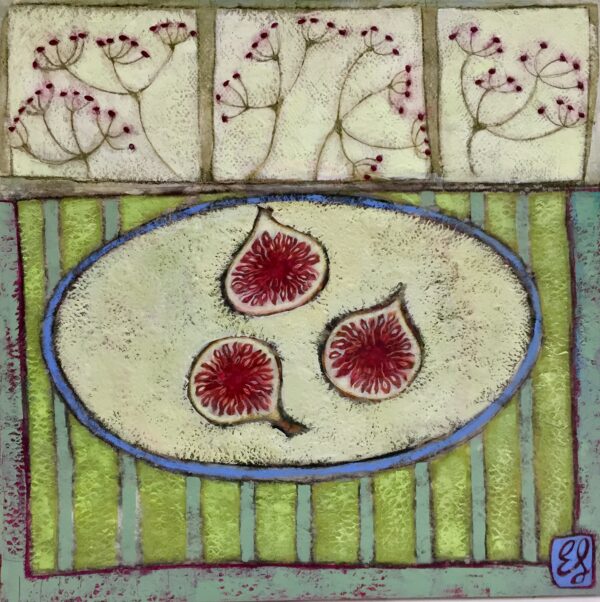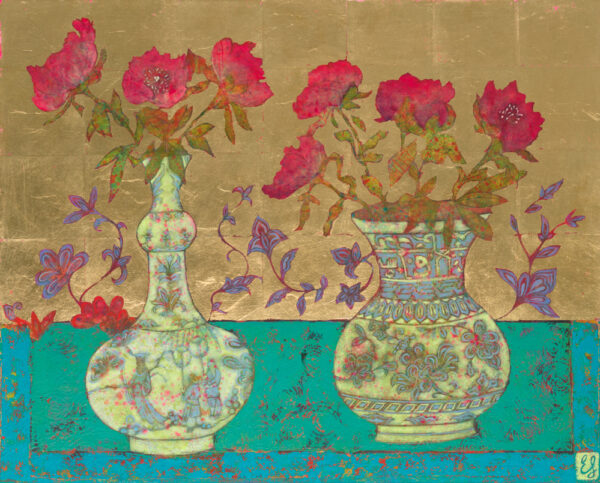Emma Forrester
Biography / Artist statement
Emma Forrester is a Wandsworth-based professional artist. She exhibits in several UK galleries and at national and international art fairs, including New York and Singapore. She opens up her studio twice a year at Wimbledon Art Studios and has taken part in Wandsworth Artists' Open House event in previous years.
Emma graduated in 1993 with a degree in Fine Art from Liverpool University. Having worked as a scenic artist in the theatre on many West End shows and Royal Opera House productions, she is now concentrating on creating and exhibiting her own paintings. The technical skills acquired whilst working in theatre have partially contributed to the expressive style evident in this body of work.
Her recent works, including many still lifes, bear an expressive use of line to portray everyday objects such as vases and teacups. An appreciation of pattern and form has been fundamental in creating these works. Looking at the influence of textiles on the work of Matisse has provided great inspiration.
Emma says of her work, “I am drawn to beautiful forms whether they are man-made or natural. My aim is to show my appreciation of the simple beauty of such objects by their sensitive portrayal in my paintings. In my work I'll often draw and paint the forms many times, scratching and scraping through to previous layers to create a broadly descriptive but beautiful image. My aim is not to ‘copy’ the object in paint, but rather to describe and celebrate what I see with mark making skills that have developed into my personal style as an artist.”
In some of her most recent pieces she tenderly draws and paints pattern over objects, which then spills over into the background, thus flattening out the picture plane. This transforms what could be a simply representational still life into a thoughtful and delicate abstract piece of work, exuding balance and harmony.
Born in Stoke-on-Trent, the home of the pottery industry, she and her family have a life-long appreciation of ceramics. The celebration of this once great British industry is hopefully apparent in this recent body of work.







